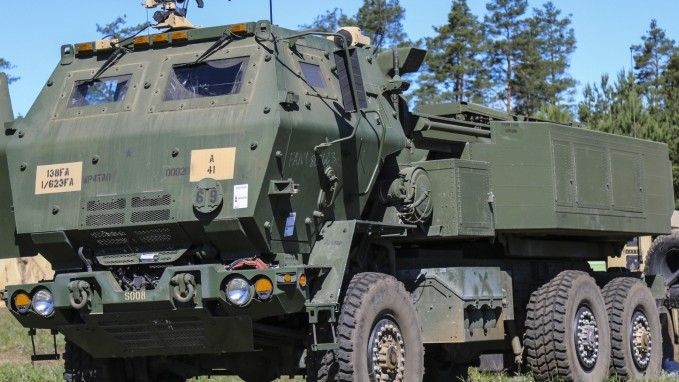Will Poland Purchase New Elements for the Homar/HIMARS System?

Polish Ministry of Defence is planning to acquire some elements of the squadron-level rocket artillery fire module (Homar system) domestically. The Polish products would complement the equipment procured within the framework of the FMS programme, Defence24.pl found out. It is planned that more “fire module” elements are acquired. It is also possible that new types of rockets would also be procured.
The FMS agreement signed in February 2019, covering the acquisition of the first HIMARS squadron, concerns a modest configuration when compared to the original plan. 20 launchers with 300 GMLRS and ATACMS effectors and command vehicles with the AFATDS system, ammunition carriers, and recovery vehicles have been the subject of the aforesaid purchase.
The agreement signed in 2019 was concluded after a procurement procedure aimed at acquiring three squadrons from a Polish consortium, partnering up with a foreign entity was cancelled in 2018. The procurement above had concerned the system configured to match the Polish requirements and take into account the Polish-made components (Topaz artillery fire control system and vehicles) and possible transfer of technology. Contrary to the initial assumptions, however, fewer rockets have been acquired. Three Homar squadrons were to receive 1.8 thousand live rockets (in the case of GMLRS - manufactured in Poland, mostly). Reconnaissance vehicles were not procured as well.
Responding to the questions asked by us, the Press Department at the MoD’s Operational Centre stated: “The elements of the HOMAR squadron-level fire modules procured within the framework of the FMS agreement implemented now constitute just a part of the expected inventory to be assigned to the element. The remaining elements of the HOMAR squadron-level fire module are being procured on the domestic market.
As for now, we do not know what elements the Polish Ministry of Defence would be willing to acquire locally. The above could refer to the reconnaissance vehicles, as these had been a part of the original Homar system configuration. It is possible though, that other elements could be procured as well. Most probably squadron-level joint operations would be taking place with the use of the AFATDS and the Polish Topaz system, adopted to work together within the framework of the ASCA initiative involving Poland.
The MoD confirmed that the Technical Modernization Plan covering the period until 2035 also envisages the acquisition of more Homar modules. “As the plan in question is a confidential document, any quantitative and value-related data cannot be publicly disclosed”, it was stressed.
It remains an open question whether and within what scope the future squadrons would differ from the first one. It cannot be ruled out that some elements manufactured locally would be used here. Some could potentially be acquired based on industrial cooperation, should initiative as such indeed be launched.
The MoD also referred to the procurement of live effectors for the HIMARS/Homar system. “Within the framework of the current agreement, a base quantity of effectors is envisaged, required to achieve the basic operational capacity. Further procurement would be planned as appropriate, concerning the expansion of the element’s combat capabilities, procurement of subsequent modules and with the technological advancements taken into account with regard to the system and the rockets”, the Polish Ministry of Defence announced.
The fact that the “technological advancement” is taken into the account means that the MoD does consider the acquisition of further equipment, namely modern armament for the HIMARS/Homar system. The above possibly could refer to the GMLRS-ER rockets developed in the US, with the range extended up to 200 kilometers. A single launch container would still accommodate six rockets. The new effectors may also include the LRPF tactical missiles with a range of around 500 kilometers. The LRPF effectors would only enter service in a few years, gradually replacing the ATACMS missiles.
Certainly, the introduction of these missiles, once the development process is finalized, would constitute a major reinforcement for the Polish rocket artillery units. Another option would be to introduce GLSDB missiles developed by Boeing and Saab, fusing the M26 MLRS and SDB guided bomb units, with a range of up to 150 kilometers. We still have no idea whether, and to what extent Homar could become a program in which the Polish industry would play a relevant role.
